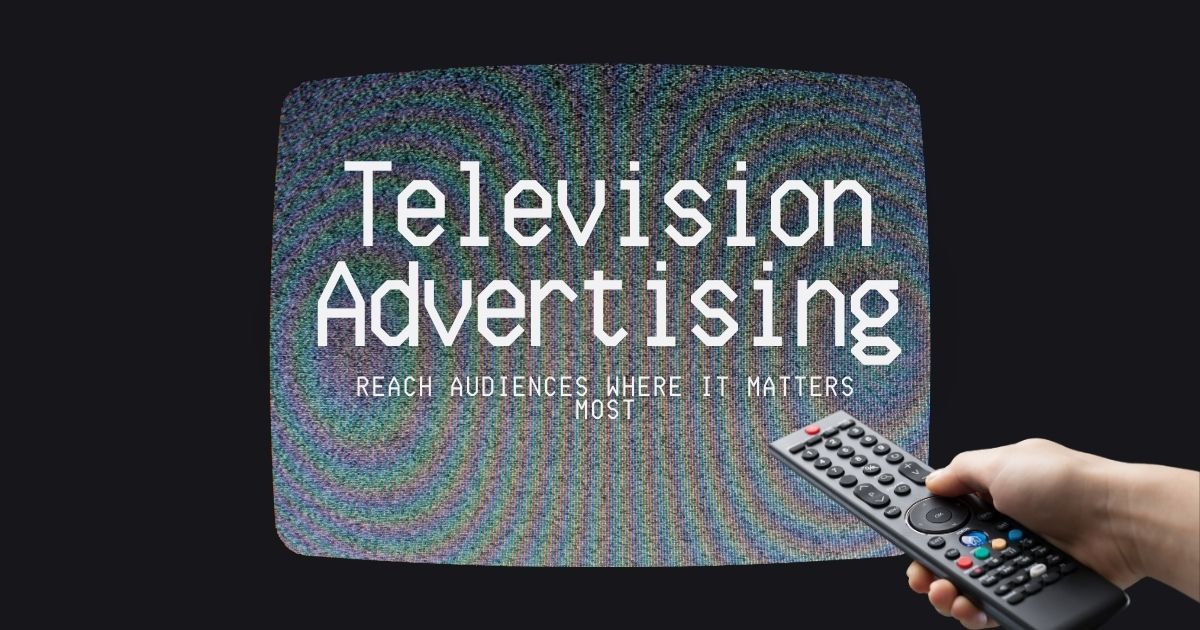Despite predictions of its demise, television advertising remains one of the most powerful tools for building brand awareness. While digital marketing dominates conversations about modern advertising, TV continues to deliver something no other medium can match: simultaneous reach to millions of viewers with compelling audiovisual storytelling.
Television advertising creates brand awareness through a unique combination of mass reach, emotional connection, and repeated exposure. When executed strategically, TV campaigns don’t just inform audiences about products—they embed brands into cultural consciousness and create lasting mental associations that drive purchasing decisions for years to come.
Understanding how television advertising builds brand awareness can help marketers leverage this medium effectively, whether as a standalone strategy or as part of an integrated marketing approach.
The Science Behind TV’s Brand-Building Power

Television advertising works by creating multiple touchpoints in viewers’ minds through repeated exposure and emotional engagement. Unlike digital ads that consumers might skip or ignore, TV commercials capture attention during programming breaks when audiences are already engaged and receptive.
The medium’s effectiveness stems from its ability to combine visual, auditory, and narrative elements simultaneously. This multisensory approach creates stronger memory formation than single-sensory advertising methods. When viewers see a brand’s logo, hear its jingle, and watch its story unfold, multiple areas of the brain activate, increasing the likelihood of brand recall.
Research shows that TV advertising builds both explicit awareness (conscious brand recognition) and implicit awareness (subconscious brand associations). The implicit layer proves particularly valuable because it influences consumer behavior even when people don’t actively remember seeing specific commercials.
Mass Reach Creates Instant Recognition
Television’s unparalleled reach remains its greatest strength for brand awareness building. A single prime-time commercial can expose millions of viewers to a brand message simultaneously, creating instant market presence that would take months to achieve through other channels. If you’re curious about targeting the right audience with TV advertising, we break down the strategies that maximize your reach.
This mass exposure generates what marketers call “share of voice”—the proportion of advertising attention a brand captures within its category. Higher share of voice typically correlates with increased market share, as consumers gravitate toward brands they encounter most frequently.
The reach advantage becomes particularly pronounced for new brands entering competitive markets. A well-placed TV campaign can establish market presence overnight, helping unknown brands compete with established players by achieving comparable visibility levels.
Regional and national television options allow brands to scale their reach according to budget and objectives. Local businesses can build community awareness through regional spots, while national brands can achieve coast-to-coast recognition through network advertising.
Emotional Storytelling Drives Memory Formation

Television advertising excels at emotional storytelling, which creates stronger brand memories than purely informational advertising. The medium’s time format allows brands to develop narratives that resonate with viewers’ experiences, values, and aspirations.
Emotional connections formed through TV advertising tend to be more durable than those created through other media. When consumers feel positive emotions while watching a commercial, they transfer those feelings to the brand itself. This emotional branding creates preference beyond rational product comparisons.
Successful TV campaigns often become part of popular culture, generating conversation and social sharing that extends their reach beyond paid media impressions. Memorable characters, catchphrases, and scenarios from television advertising can influence consumer behavior for decades after campaigns end.
The storytelling format also allows brands to communicate complex positioning messages that might be difficult to convey through shorter-form advertising. Brands can establish personality, values, and lifestyle associations through narrative elements that stick with viewers long after the commercial ends.
Repetition Reinforces Brand Recognition
Television advertising’s repetition capabilities significantly enhance brand awareness building. Each additional viewing reinforces brand recognition and moves the brand from unknown to familiar to preferred in consumers’ minds. To understand how consumers perceive your brand, consider brand perception in marketing.
This repeated exposure follows the psychological principle of mere exposure effect, where familiarity breeds preference. Each additional viewing reinforces brand recognition and moves the brand from unknown to familiar to preferred in consumers’ minds.
Strategic media buying maximizes repetition efficiency by targeting specific demographics during optimal viewing times. Brands can concentrate their messages when target audiences are most likely to be watching, increasing frequency among desired consumer segments.
The repetition also allows for message evolution within campaigns. Brands can introduce concepts in early flights, then build complexity or introduce new product benefits in subsequent waves, creating layered awareness that deepens over time.
Television Advertising Integration Amplifies Results

Modern television advertising works most effectively when integrated with other marketing channels. TV campaigns can drive traffic to websites, increase social media engagement, and boost search volume for brand terms, creating a multiplier effect that extends beyond traditional viewership metrics.
Cross-platform integration allows brands to retarget TV viewers with digital messages, creating additional touchpoints that reinforce brand awareness. This approach combines TV’s mass reach with digital’s precision targeting, maximizing overall campaign effectiveness.
Television advertising also enhances the performance of other marketing channels. Print ads, radio spots, and digital campaigns often perform better when supported by TV advertising, as the visual and auditory brand elements from television help consumers recognize and respond to brand messages across all media.
The integration extends to retail environments, where TV-advertised brands often receive preferential treatment from retailers and generate higher conversion rates among consumers already familiar with their advertising messages.
Measuring Television’s Brand Awareness Impact
Tracking television advertising’s brand awareness impact requires both traditional and modern measurement approaches. Brand lift studies, digital analytics, and advanced attribution modeling all help quantify success. Explore how to analyze a television advertisement like a pro to measure your campaigns effectively.
Digital analytics reveal TV advertising’s indirect effects through website traffic spikes, social media mentions, and search volume increases that correlate with commercial airings. These secondary metrics often demonstrate TV’s broader influence on consumer behavior.
Advanced attribution modeling helps marketers understand how television advertising contributes to customer acquisition and retention over time. While TV might not drive immediate clicks like digital advertising, its brand awareness effects often influence purchase decisions weeks or months later.
Sales correlation analysis examines relationships between TV advertising investment and revenue growth, accounting for seasonal factors and competitive activity. This approach helps demonstrate TV’s business impact beyond awareness metrics.
How Television Builds Trust and Credibility at Scale
Brand awareness is not just about being seen—it is about being believed. Television advertising carries an inherent credibility that few other channels can replicate. For small brands, small business TV advertising offers guidance on leveraging limited budgets for maximum credibility and recognition.
This trust-building effect plays a critical role in awareness campaigns, particularly for new or scaling brands. When consumers repeatedly see a brand on television, it signals stability and success, reducing perceived risk and increasing confidence in future purchase decisions. Even when viewers do not actively engage with the message, the mere presence of a brand on television elevates its perceived authority within the category.
Over time, this trust compounds. Brands that maintain consistent TV visibility become familiar household names, reinforcing the idea that they are reliable choices. This is why industries such as finance, healthcare, automotive, and consumer goods continue to invest heavily in television despite the rise of digital alternatives.
The Role of Television in Shaping Brand Identity
Television advertising does more than introduce a brand—it defines how that brand is perceived. Through consistent tone, visuals, music, and storytelling, TV commercials help shape a brand’s personality in the minds of consumers.
Unlike performance-driven ads that focus on immediate action, television allows brands to communicate values, lifestyle associations, and emotional positioning. A brand can be seen as innovative, comforting, bold, or family-oriented based on how it presents itself on screen. These perceptions become mental shortcuts that consumers rely on when making decisions.
This identity-building power is especially important in crowded markets where product differentiation is minimal. When features and pricing are similar, brand identity becomes the deciding factor. Television advertising gives brands the space and creative freedom to establish that identity in a way that feels authentic and memorable.
Long-Term Memory Effects of Television Advertising

One of television advertising’s most underestimated strengths is its ability to influence long-term memory. While digital ads often aim for immediate clicks or conversions, TV advertising works on a longer psychological timeline, embedding brands into consumers’ mental frameworks.
Repeated exposure to consistent TV messaging strengthens neural pathways associated with a brand. Over time, this creates automatic recognition and preference, even if the viewer cannot recall specific commercials. When a purchase moment arises, familiar brands feel safer and more appealing, often winning out over lesser-known alternatives.
This long-term effect explains why brands that invest consistently in television tend to outperform competitors during economic downturns or market disruptions. Awareness built over years provides resilience, allowing brands to remain top-of-mind even when advertising activity fluctuates.
Television Advertising’s Influence on Buying Decisions
Brand awareness generated by television advertising rarely operates in isolation. Instead, it quietly influences decisions across multiple touchpoints. A consumer might see a TV commercial, later encounter a social ad from the same brand, and finally search for the product online. The television exposure primes the consumer to trust and recognize the brand throughout this journey.
This influence is particularly strong for high-consideration purchases. Products such as cars, insurance policies, electronics, and home services often require extended decision-making processes. Television advertising builds familiarity early in the journey, ensuring the brand remains in consideration long before the final purchase occurs.
Even for impulse-driven categories, TV advertising increases the likelihood of selection at the shelf or checkout stage. Familiarity reduces cognitive effort, making well-known brands the default choice in moments of quick decision-making.
Ad Frequency and Consistency in Brand Awareness Campaigns
Consistency is a defining factor in successful television advertising. Sporadic campaigns may generate short-term attention, but sustained visibility is what builds enduring brand awareness. Consumers need repeated exposure over time to form lasting mental associations.
Effective TV advertisers maintain consistent creative elements while refreshing messaging to prevent fatigue. This balance allows brands to reinforce recognition without becoming repetitive or forgettable. Logos, taglines, color palettes, and audio cues act as anchors that reinforce brand memory with each exposure.
Consistency also extends beyond creative execution to scheduling. Brands that remain visible across multiple quarters or years benefit from cumulative awareness gains. This long-term presence positions them as category leaders, even when competitors outspend them temporarily.
Maximizing Television Advertising for Brand Awareness
Successful television advertising for brand awareness requires strategic creative development, smart media buying, and long-term commitment. Creative elements should prioritize brand recognition through consistent visual identity, memorable music, and clear brand messaging.
Media strategy should balance reach and frequency based on campaign objectives and budget constraints. New brands typically benefit from maximizing reach to build initial awareness, while established brands might focus on frequency to maintain market presence.
Timing considerations include seasonal factors, competitive activity, and product launch schedules. Television advertising often works best when sustained over extended periods rather than concentrated in short bursts.
Budget allocation should account for production costs, media buying, and measurement expenses. While television advertising requires significant investment, the brand awareness returns often justify the cost through increased market share and customer lifetime value.
The Enduring Value of Television Brand Building
Television advertising continues to build brand awareness more effectively than any other single medium. Its combination of mass reach, emotional engagement, and repeated exposure creates brand recognition that influences consumer behavior across all touchpoints.
While digital marketing offers targeting precision and immediate measurement, television advertising provides the broad awareness foundation that makes other marketing efforts more effective. Brands that invest in television advertising often see improved performance across their entire marketing portfolio.
The key lies in understanding television advertising as a long-term brand investment rather than a short-term sales driver. When measured appropriately and integrated strategically, TV advertising delivers brand awareness that compounds over time, creating sustainable competitive advantages that justify the investment.
Consider how television advertising might fit into your brand awareness strategy, whether as a primary vehicle for reaching new audiences or as a supporting element that amplifies your other marketing efforts.
Frequently Asked Questions (FAQ)
Is television advertising still effective for brand awareness?
Yes, television advertising remains one of the most effective channels for building brand awareness due to its mass reach, emotional storytelling, and high memorability. Its ability to influence both conscious and subconscious perception makes it uniquely powerful.
How long does it take for TV advertising to build brand awareness?
Brand awareness from television advertising typically builds over weeks or months, depending on campaign frequency and reach. Sustained campaigns often deliver the strongest and most durable results over time.
Is television advertising suitable for small or emerging brands?
Television can be effective for smaller brands when used strategically, such as through regional buys, targeted programming, or connected TV platforms. Even limited exposure can significantly boost credibility and recognition.
How does television advertising compare to digital advertising for awareness?
Digital advertising excels at targeting and short-term actions, while television advertising excels at broad awareness and emotional connection. The strongest strategies often combine both to maximize impact.
Can television advertising influence online behavior?
Yes, television advertising frequently drives increases in website traffic, search activity, and social engagement. Many consumers research brands online after seeing them advertised on TV.
How should brands measure television advertising success?
Measurement typically includes brand lift studies, reach and frequency analysis, search volume trends, and long-term sales correlation. TV success should be evaluated on awareness and influence rather than immediate conversions alone.





